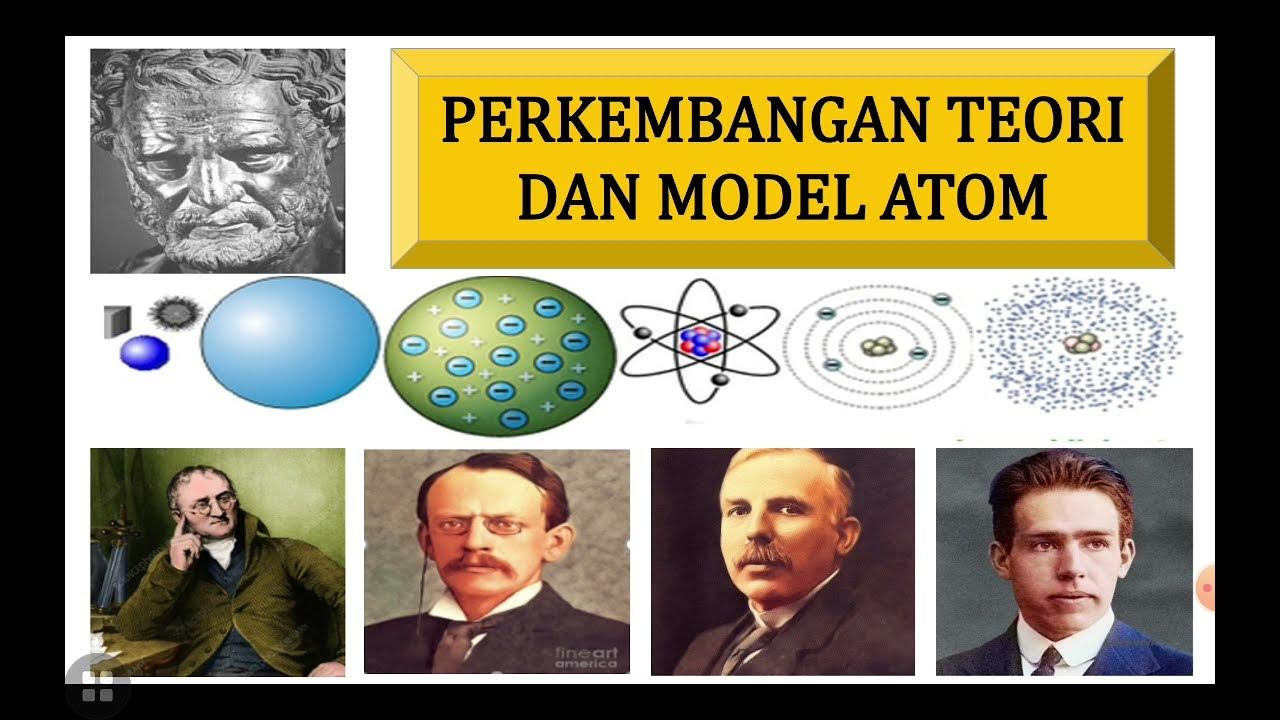Atomic theory | Matter | Physics | FuseSchool
Summary
TLDRThe video traces the evolution of atomic theory, starting from ancient Greek concepts of indivisible particles, to John Dalton's foundational principles in the 1800s. Dalton established that atoms constitute all matter and cannot be subdivided. J.J. Thomson later discovered electrons, proposing the plum pudding model of the atom. However, Ernest Rutherford's gold foil experiment revealed the atom's nuclear structure, showing a central positive nucleus with electrons orbiting it. Niels Bohr further refined this model, defining specific orbits for electrons. Today, the atom is understood as a nucleus surrounded by electrons in defined energy levels, marking significant advancements in our understanding of atomic structure.
Takeaways
- 🔬 The concept of the atom dates back to ancient Greece, where it was thought to be indivisible.
- 📜 The word 'atom' comes from the Greek word 'atomos', meaning 'indivisible'.
- ⚗️ John Dalton, in the 1800s, proposed five key ideas about atoms, including their role as the building blocks of matter.
- 🔍 Dalton's theory states that atoms cannot be subdivided and that atoms of the same element are identical.
- ⚛️ J.J. Thomson discovered electrons and proposed the plum pudding model, suggesting atoms consist of a positively charged sphere with electrons inside.
- 🧪 Ernest Rutherford's experiments with alpha particles led to the conclusion that the plum pudding model was inaccurate.
- 🔄 Rutherford's team found that some alpha particles were deflected, indicating the presence of a central nucleus in atoms.
- 🌌 The nuclear model of the atom describes a positively charged nucleus surrounded by orbiting electrons.
- 🌐 Niels Bohr expanded on Rutherford's model, proposing that electrons occupy specific orbits around the nucleus.
- 🔑 Today's understanding of the atom features a nucleus with electrons in defined energy levels, similar to planets orbiting the sun.
Q & A
What is the origin of the word 'atom'?
-The word 'atom' comes from the ancient Greek word 'atomos', which means 'indivisible'.
What were John Dalton's five main conclusions about atoms?
-1. Atoms make up all matter. 2. Atoms cannot be subdivided into smaller particles. 3. Atoms of the same element are identical, while atoms of different elements differ. 4. Chemical reactions rearrange atoms. 5. Compounds form when two or more different elements bond together.
What significant discovery did J.J. Thomson make regarding atoms?
-J.J. Thomson discovered the existence of electrons and proposed the 'plum pudding' model of the atom, suggesting that electrons are embedded in a positively charged sphere.
How did Ernest Rutherford's experiments challenge the plum pudding model?
-Rutherford's experiments showed that while some alpha particles passed through gold foil, others were deflected or bounced back, indicating the presence of a small, dense, positively charged nucleus within the atom.
What did Rutherford conclude about the structure of the atom?
-Rutherford concluded that atoms have a central nucleus containing positive charge, which is orbited by negatively charged electrons.
What advancements did Niels Bohr make to the atomic model?
-Niels Bohr refined Rutherford's model by proposing that electrons occupy specific orbits or shells around the nucleus, similar to how planets orbit the sun, and that they can only orbit at certain distances and energy levels.
What is the nuclear model of the atom?
-The nuclear model describes an atom as having a central nucleus with a positive charge, surrounded by negatively charged electrons that orbit at specific distances.
What type of particles did Geiger and Muller use in their experiments?
-Geiger and Muller used alpha particles, which are tiny positively charged particles.
Why was the gold foil experiment significant?
-The gold foil experiment was significant because it provided evidence for the existence of the atomic nucleus and helped shift the scientific understanding of atomic structure.
What is the current understanding of atomic structure?
-The current understanding of atomic structure is that there is a positively charged nucleus at the center of the atom, with negatively charged electrons orbiting around it in specific shells.
Outlines

This section is available to paid users only. Please upgrade to access this part.
Upgrade NowMindmap

This section is available to paid users only. Please upgrade to access this part.
Upgrade NowKeywords

This section is available to paid users only. Please upgrade to access this part.
Upgrade NowHighlights

This section is available to paid users only. Please upgrade to access this part.
Upgrade NowTranscripts

This section is available to paid users only. Please upgrade to access this part.
Upgrade NowBrowse More Related Video

Atomic Structure | Grade 8 Science DepEd MELC Quarter 3 Module 3

Teori dan Model Atom Dalton | Video Belajar Kelas 10 IPA - Kimia

SEJARAH PERKEMBANGAN TEORI ATOM

Kimia X - Struktur Atom #3 | Perkembangan Teori dan Model Atom

The Atomic Theory: A Timeline Through History

SCIENCE 8: Q2_WREK 1- DAY 1: GREEK PHILOSOPHERS AND THE ATOMOS ||MATATAG CURRICULUM
5.0 / 5 (0 votes)